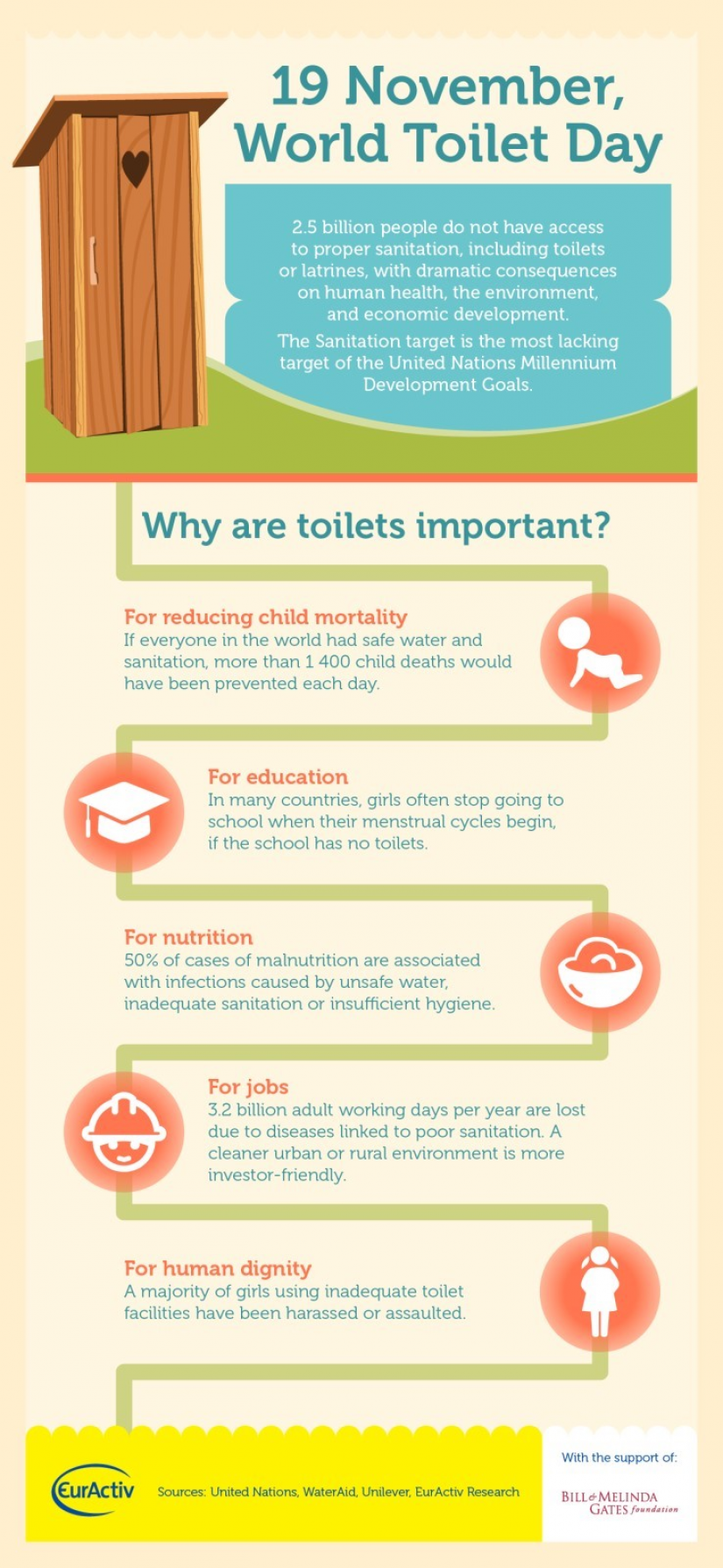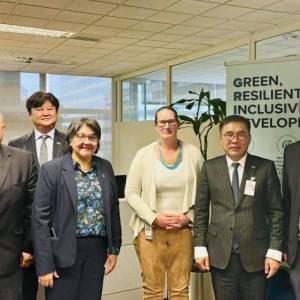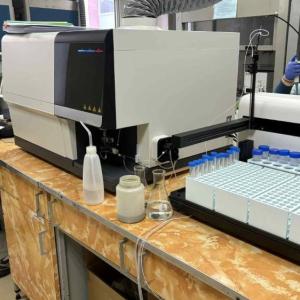World Toilet Day 2020: “Sustainable Sanitation and Climate Change”
Environment
Today is World Toilet Day. World Toilet Day has been an annual United Nations Observance since 2013. It was first established in 2001 by the World Toilet Organization to raise World Toilet Day celebrates toilets and raises awareness of the lack of access to safely managed sanitation and call on action to tackle the global sanitation crisis.
Every year, UN-Water — the United Nations’ coordination mechanism on water and sanitation — sets the theme for World Toilet Day. In 2020, the theme is ‘Sustainable sanitation and climate change’.
A well-functioning toilet is connected to a sanitation system that takes away and deals with human waste. These systems need to work 24 hours a day, every day, to keep us and our living environments safe and clean. As informed, over half of the global population or 4.2 billion people lack safe sanitation. (WHO/UNICEF 2019) 2 in 5 schools around the world lacked basic handwashing facilities prior to the COVID-19 pandemic. (WHO/UNICEF 2020).
Flooding, drought and rising sea levels can damage any part of a sanitation system – toilets, pipes, tanks and treatment plants – spreading raw sewage and creating a public health emergency. The effects of climate change are only becoming more frequent and more extreme. We must make our sanitation systems resilient, so they are sustainable as climate change gets worse. Billions of people live with weak and vulnerable sanitation systems, or no systems at all. Climate change will disrupt or destroy sanitation services for huge numbers of people if we do not act.
Climate-resilient water supply and sanitation could save the lives of more than 360,000 infants every year. (UN 2018)
Everyone must have sustainable sanitation, alongside clean water and handwashing facilities, to help protect and maintain our health security and stop the spread of deadly infectious diseases such as COVID-19, cholera and typhoid.
Sustainable sanitation begins with a toilet that effectively captures human waste in a safe, accessible and dignified setting. The waste then gets stored in a tank, which can be emptied later by a collection service, or transported away by pipework.
The next stage is treatment and safe disposal. Safe reuse of human waste helps save water, reduces and captures greenhouse gas emissions for energy production, and can provide agriculture with a reliable source of water and nutrients.
Other relevant facts as follows:

- 40% –
or three billion people – of the global population live without basic
handwashing facilities with soap and water available at home. (UNICEF 2020)
- Around
297,000 children under five – more than 800 every day – die annually from
diarrhoeal diseases due to poor hygiene, poor sanitation or unsafe drinking
water. (WHO 2019)
- Globally,
80% of the wastewater generated by society flows back into the ecosystem
without being treated or reused. (Sato et. al, 2013)
- Hygiene
promotion is the most cost-effective health intervention. (World Bank 2016)
- Climate-resilient
water supply and sanitation could save the lives of more than 360,000 infants
every year. (UN 2018)
- By
2050, up to 5.7 billion people could be living in areas where water is scarce
for at least one month a year, creating unprecedented competition for water.
(UNESCO 2018)
- By 2050, the number of people at risk of floods will increase from its current level of 1.2 billion to 1.6 billion. (UNESCO 2018)
https://mca-mongolia.gov.mn/news/aquapedia/world-toilet-day
Millennium Challenge Account-Mongolia
 Ulaanbaatar
Ulaanbaatar














































































